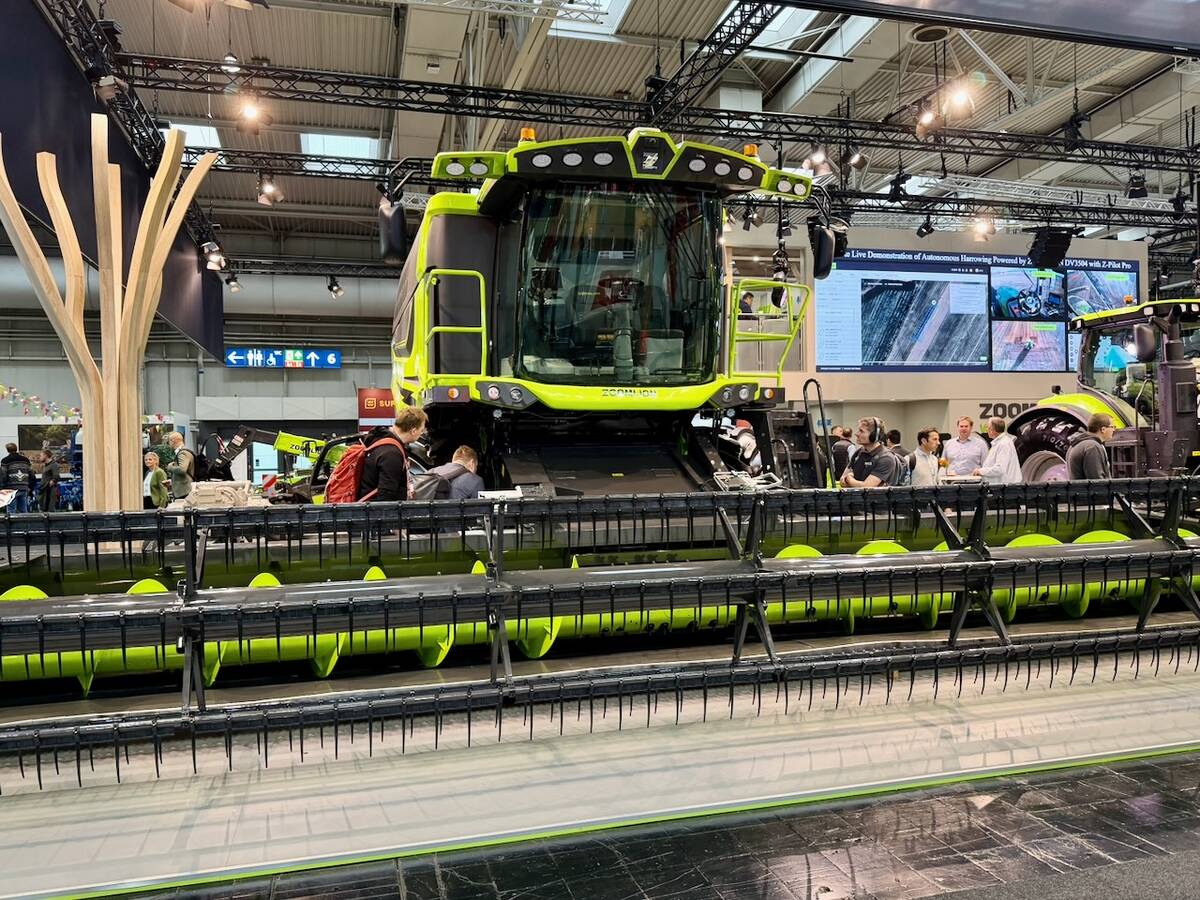Western Producer Calgary reporter Barbara Duckworth travelled to Denver, Colorado, for the International Livestock Congress and the National Western Stock Show to look at how issues there will affect Canadian producers.
Scott Harvie called the Canadian brand a mark of excellence but for many who were considering entering Denver’s prestigious stock show, the mandatory brand was a pain in the right hip.
The Colorado state veterinarian ordered that all Canadian cattle entering the jurisdiction must have a tattoo inside the ear and a brand on the right hip identifying their country of origin.
Read Also

Agritechnica Day 3: Hybrid drive for a combine, data standards keep up to tech change and tractors of the year
Agritechnica 2025 Day 3: Hybrid drive for a combine, data standards keep up to tech change and tractors of the year.
Three Alberta breeders, Hirsche Herefords of High River, and Harvie Herefords and Remitall Cattle Co., of Olds were among the few to meet the requirements. Many Canadians balked at branding their purebred show cattle and declined to enter the National Western Stock Show held Jan. 5-27.
“We didn’t want to have to brand them for showing,” said Bryan Latimer, a partner in Remitall Cattle.
However, their show cattle had a shaved rectangle on the right hip showing a freeze brand of C inverted V, N to meet the veterinarian’s requirements. These exceed the U.S. Department of Agriculture rules allowing Canadian breeding stock into the country as of Nov. 19.
All the cattle had to be tested for bovine viral disease, tuberculosis, brucellosis and for the bulls, trichomoniasis. The branding and tattooing were additional requirements for Canadians.
The Latimers were willing to do what it takes to get back into the U.S. because they own a large number of cattle in partnership with Americans.
“We need to get our market re-established again after BSE,” he said.
Before BSE closed the borders, Latimer estimates 25 percent of the Denver Hereford show was made up of Canadians.
“Canadians make it a better show because it is an international event,” he said.
Grant Hirsche was stoic about the requirements but he also had an advantage since he owns a ranch in Oklahoma and was able to bring his American cattle to the show without branding.
However, he accepts the extra requirements as the cost of doing business since he has a large American customer base.
“We have to live with the new rules. Each state has its own regulations and we have to abide by them,” he said.
The Harvie family was nervous about crossing the border but breezed through in half an hour because all their paperwork was correct, said Scott Harvie.
The show turned out to be a success for them, including two second-place winners even with the shaved patches showing the judges the Canadian brand.
“We were worried it would mean dead last in the classes but it didn’t happen,” he said.
Craig Flewelling of Bowden, Alta., and Billy Elmhirst of Indian River, Ont., stood on the sidelines of the Hereford show. Although both have had grand champion Herefords in Canada, they were reluctant to go through the extra requirements to enter the Denver show ring. However, they are confident the rules will relax and they will be back in the ring.
“Why wouldn’t you?” said Elmhirst.
“This is where the money is. It’s like bringing your horse to the Kentucky Derby,” Flewelling said.















